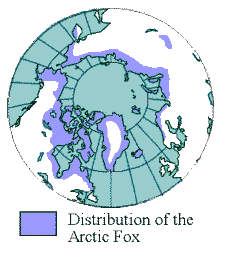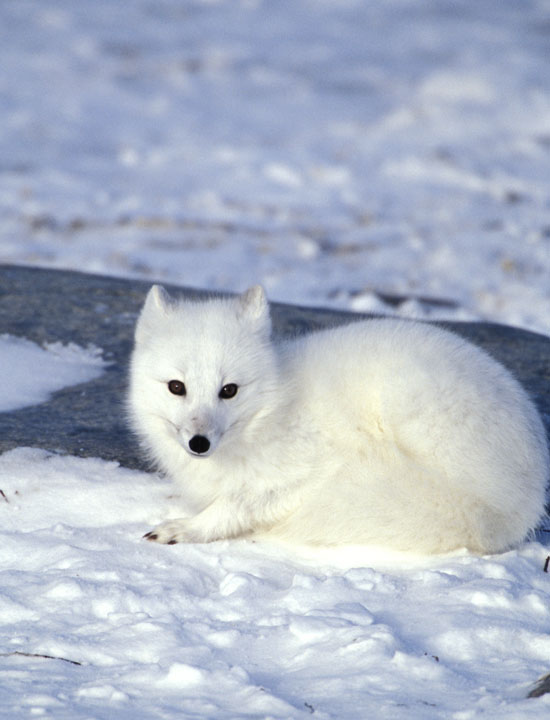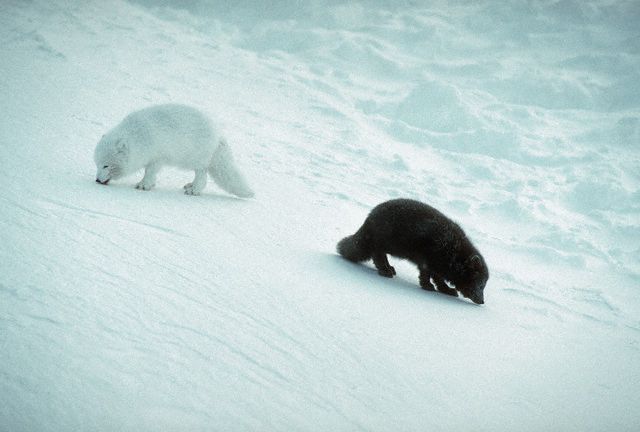Hope you brought a jacket; it's cold where I live!


A. lagopus lives primarily in alpine and Arctic tundra regions, usually in coastal areas. It can be found on many of the Arctic islands, as well as in northern Greenland, Svalbard, and
It has been observed that in general the white morph of the Arctic fox is primarily continental while the blue morph is more common on the islands (Sale, 2006), and that mixing of the two occurs primarily because of winter migration. A. lagopus is typically residential but becomes somewhat migratory when prey is scarce. It is believed that migration could be due at least in part to foxes being carried by ice floes during the spring when ice is melting. Dens are generally made in low mounds in light soil on the open tundra, and are usually some distance apart (Nowak, 1999). An Arctic fox family group's territory is typically greater than 12 square miles. A. lagopus is very territorial during the summer months, with both sexes marking the boundaries of their territory with urine and feces on prominent tussocks or rocks. When disputing territorial claims with other foxes, they communicate using a high-pitched undulating whine.
